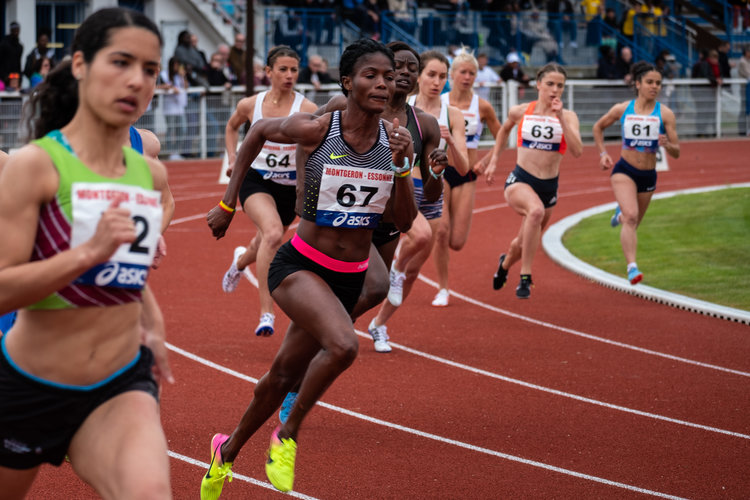In the past few years, a growing number of male athletes have taken home awards in women’s sports. Rather than decry this trend as unfair or sexist, many media figures and politicians have celebrated it as a mark of inclusivity and progress because the men placing in these events identify as female. Reducing maleness and femaleness to one’s “gender identity” ignores the reality that men and women are different, and that the differences between the sexes are not based on how a person feels.
Responding to this trend, nine states are currently considering or planning to take up legislation that would protect women’s sports by preventing biological males from competing in young women’s sports teams. Additionally, Congressman Greg Steube (FL-17) recently proposed the Protection of Women and Girls in Sports Act which would prevent schools that allow biological males to compete in women’s sports from receiving Title IX funding.
These bills take seriously the fact that men and women are different and that there is good reason for having separate girls’ sports teams. The 2018-19 competition season in Connecticut saw two biological males dominate high school girls track in, beating the teenage girls in the event and costing them potential scholarship opportunities. This isn’t because female athletes do not work as hard or train as well as male athletes, but because of the physical differences between men and women.
Prior to the teens years, there isn’t a significant difference between male and female performance in sports, but beginning at the age of 12, a significant disparity emerges, with teenage males outperforming their female peers by a factor of 10-18%. This continues into adulthood, even among elite athletes. In 2017 alone, two different female Olympic champions’ personal bests were beaten by male athletes 15,000 times. In addition to elevated testosterone levels, men also have larger heart and lungs than women, denser bones, and increased muscle mass. All of this means that men have a competitive advantage against women in athletics.
To tell women that they must compete against men athletically is to essentially say that, in order to win, women must beat men at being men. This is not only unfair, but completely unreasonable.
Maintaining separate sports teams for male and female athletes takes the differences between men and women into account in such a way that student athletes can thrive. For example, men’s and women’s basketball emphasize different skills based on the physical differences between the two sexes. Ignoring those differences not only hurts female athletes’ competitive chances, but also puts their safety at risk. Estrogen causes female ligaments to become more lax, creating a significantly higher likelihood of injury. Placing female athletes in situations where they are pushing themselves to be competitive against male athletes ignores concerns for student safety. Testifying in favor of New Hampshire’s proposed bill to protect women’s sports, high school swimmer Ruth Winslow asked, “Why should a biological female work harder than they already are and risk injury to compete against a male athlete who does not have to work?”
Idaho legislator Barbara Erhardt, whose time coaching student athletes prompted her to propose a similar bill in her state commented,
All of my years of coaching and working with young girls, I can tell you first-hand that girls are afraid to compete when competing with boys. It inhibits their ability to perform, aside from just the physicality, but there’s a true intimidation factor. It’s hard for a lot of girls and women.
Failure to protect the integrity of women’s sports at the national and local level will cost our nation’s young women and girls. If top awards in women’s events go to biological males, the result will be girls faced with the realization that no matter how many hours they put in, no matter how hard they work and how hard they push themselves, they can’t win against the biological male in the lane next to them. Girls will grow up robbed of opportunities and watching their male peers take home top awards in women’s sports events, and most likely many of them will walk away from sports, frustrated and discouraged. The result will be that the next generation of girls will grow up with fewer and fewer female role models in sports, creating a cycle of disappearing female athletics. In other words, the transgender agenda, if it is not stopped, will end women’s sports. When girls’ athletic scholarship opportunities go to biological boys, we’re returning to a “no girls allowed” era in athletics and girls will be denied the physical and social benefits of sports.
Currently, Minnesota has what Transathlete describes as an “inclusive” policy. Under Minnesota High School Sports League rules, if a male student can produce a written statement from his parent or guardian and healthcare provider attesting that he identifies as female, the school’s activity director can decide to allow him to compete on the girls’ team.
Given the very real consequences if we fail to protect the integrity of women’s sports, it’s time for Minnesota to follow the example being set by other states and save girls’ sports from the transgender agenda. Our young women deserve better than to see top awards for their competition events go to male athletes. It’s unfair, unreasonable, and a serious step backward.


